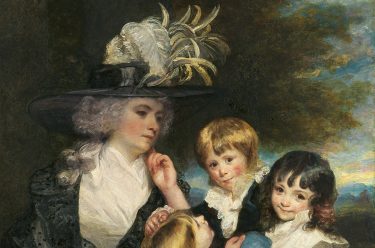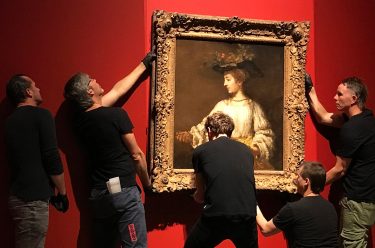Carla Binotto and Carla van Lunn, designers from Brisbane’s Maison Briz Vegas talked about their 100% recycled French rubbish – transforming secondhand clothing into designer fashion through craft at a recent Quilts Sunday Stitch-Ups public program. ‘Quilts 1700–1945′ is on display at the Queensland Art Gallery (QAG) until 22 September.
If you have visited the ‘Quilts 1700-1945′ exhibition you would have seen the display of wartime quilts made from old dresses, shirts, pyjamas, even black-out curtains and silk army parachutes. These quilts were made in times when materials were scarce and re-use was necessary.
Now, in our time of environmental concern, that same spirit of recycling and resourcefulness seen in these quilts is also the inspiration behind our Brisbane fashion label conceived in Paris.
In contrast to the slickness of mass-production and digital printing current in the fashion market, ours is a slow, imperfect aesthetic. Prints are created by hand-block printing or stenciling, and the collections incorporate many craft techniques such as patchwork and hand-embroidery. Just as quilts can sometimes be allegorical, our garments often have a symbolism and narrative to them. The transformation of humble and valueless materials into beautiful and desirable products is a constant motivation.
Carla Binotto and Carla van Lunn
‘Quilts 1700–1945′ comes from one of the world’s most important and loved collections of textiles and decorative arts — the Victoria and Albert Museum, London. This exhibition offers visitors an unprecedented opportunity to see over 30 quilted and/or patchworked bed covers and bed hangings, as well as sewing accessories, created over two-and-a-half centuries. Explore over 200 years of British quiltmaking. Every stitch tells a story.
In addition, the exhibition provides a rare opportunity to view Rajah quilt 1841. This extraordinary patchwork — generously lent by the National Gallery of Australia, Canberra — was sewn by women on board the convict ship HMS Rajah, during their transportation to Van Diemen’s Land (Tasmania) in 1841.
The following quilts are on display in the exhibition.
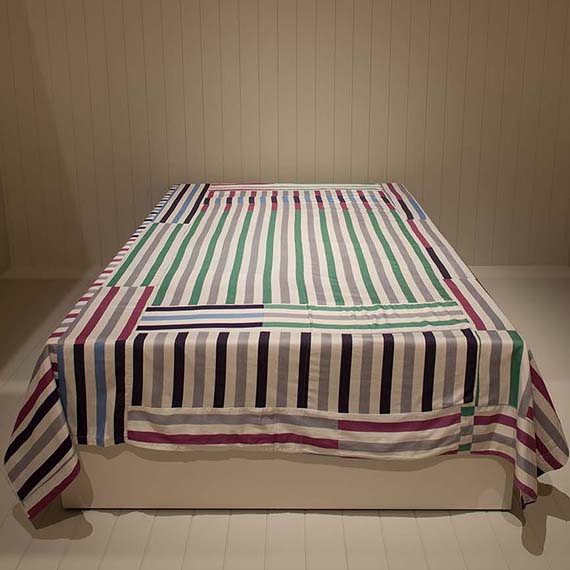
Living near a clothing factory could ensure a cheap and ready supply of fabrics. Cloth remnants were sometimes bought at the factory shop in bags priced according to weight. Annie O’Hare’s sister Margaret, who supplied her with the materials for this quilt, worked at a factory in Castlederg, County Tyrone, which made shirts and pyjamas.
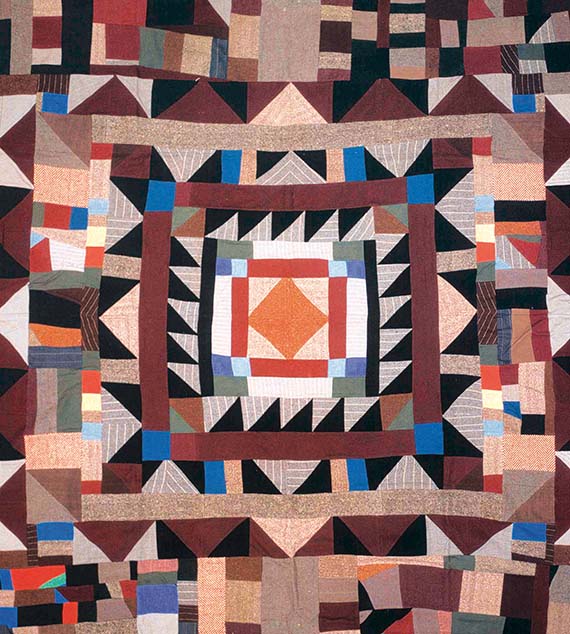
Elizabeth Magill, born in rural County Down in the nineteenth century, was first trained alongside her sisters to stitch fine white embroidery on handkerchiefs. An informal apprenticeship in dressmaking provided Elizabeth with a modest income in her late teens. She then married at 21 and moved to Belfast, where she had access to retailers of remnants from the many factories in the city. Her sewing skills enabled her to undertake work at home for friends and neighbours. Over a 40-year period, she designed and made some 200 quilts.
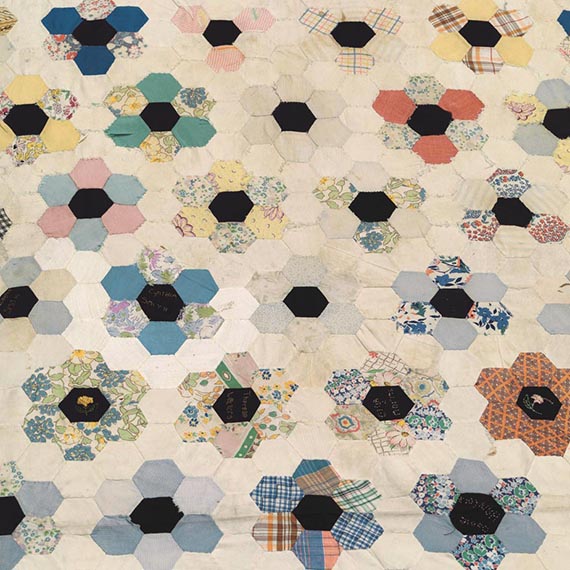
Following the Japanese occupation of Singapore in 1942, Changi Prison was used to house civilians. This coverlet was created by 20 girl guides, aged 8 to 16, as a birthday present for their leader, Elizabeth Ennis. It was stitched in secret using materials cut from the girls’ dresses and embroidered with their names. The group met once a week in the corner of the prison’s exercise yard, before the gathering was stopped by a prison guard in 1943.
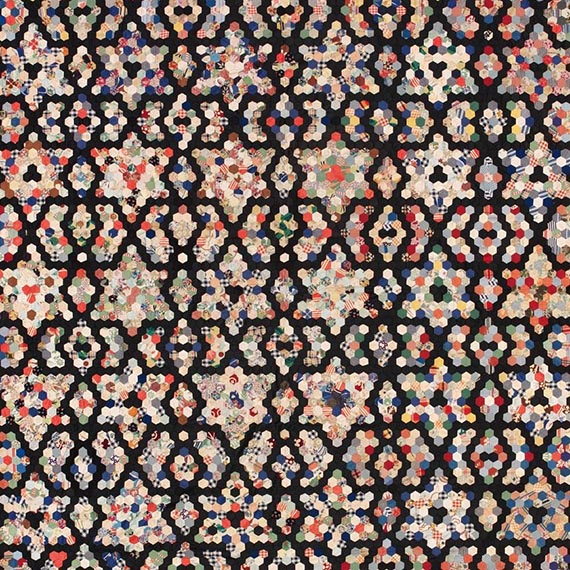
Griselda Lewis created this coverlet following World War Two, when fabrics were in short supply. Its materials are a snapshot of her life at the time. The black fabric is recycled from blackout curtain material, which would have hung in the windows of her house during wartime air raids, while some of the cottons are from swatches sent to Robert Harling, a family friend and editor of Homes and Gardens magazine. Lewis also cut up old dresses and shirts for use in her work. The reverse is believed to be made from the cotton from Red Cross famine relief parcels.


